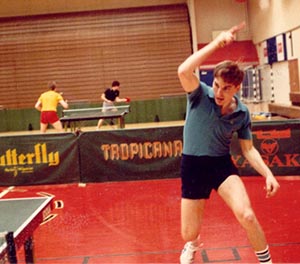Tip of the Week
What Is a Good Serve?
If I Won the Lottery
People are sometimes surprised that I occasionally buy lottery tickets. I know the odds, and they know I know the odds, and I'm a little embarrassed because they know I know they know I know the odds, and so why do I do such a silly thing?
It's all for the good of table tennis.
First, let me be up front that I don't believe in supernatural beings, so the odds of my winning the jackpot are mathematically something like a really, Really, REALLY big number to one. (To be exact, 292,201,338 to 1.) In fact, the odds are so small that I have a better chance of winning if I'm wrong, and that there are supernatural beings out there, such as some benign God who loves table tennis, and he or she decides to award me the winning lottery ticket because, well, I'll be good and use some of the $900 million ($558 million cash value, about $2.58 after taxes) to develop table tennis.
But let's be real. I don't buy lottery tickets (occasionally) because I objectively think I have a good chance of winning. I buy them for the excitement knowing there's a chance I might, and so I can dream. You know, like everyone else who buys one?
You have to remember that I'm not only a table tennis coach & writer (and 246 other table tennis things), but a science fiction & fantasy writer, which means I have a vivid imagination – which means I can imagine a LOT of things to do with that $558 million or so. Training centers!!! Professional Leagues!!! TT on TV!!! And of course, highly-paid umpires who enforce the hidden serve rule!!!


 Photo by Donna Sakai
Photo by Donna Sakai


